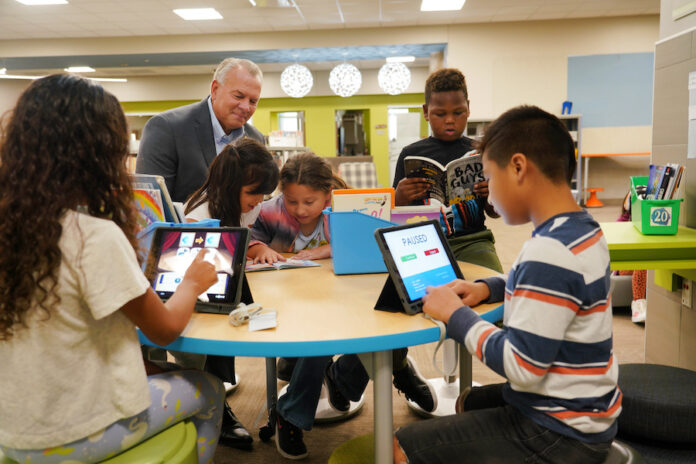Superintendent Kirt Hartzler makes a bold claim about Union Public Schools that would fill any leader with pride—or envy: “We truly are a high-poverty yet high-performing school district.” But on what does Hartzler base his assessment?
Well, it’s a work in progress that is about a decade in the making and has resulted in a 90% graduation rate in the Tulsa, Oklahoma district where nearly three-quarters of the students qualify for free and reduced-price lunch. But it’s about much more than that: “I don’t want to say we’ve transformed, because we’re continuing to transform the way a public school should look in today’s world,” says Hartzler, who started working for the district as a high school science teacher in 1986 and has been superintendent since 2013.
A little more than 10 years ago, Union Public Schools set the audacious goal of graduating 100% of students college and career ready. Teachers and administrators began collaborating on the plan by “reversing engineering” the learning experience from senior year all the way back to preschool. The result was an ongoing effort to eliminate barriers, enhance the positives and enable students to develop future-ready skills.
More from DA: Backlash against restorative discipline is growing as behavior breaks down
The key to this work is creating a high degree of personalization for every student and family. “We recognize the power of that personalization and those relationships,” he explains. “Then we continue to build on personalization through programs like community schools … we’re going to become a districtwide community school.”
Hartzler and his team have already taken community schools to the next level. Working with the city of Tulsa and a local healthcare provider, Union Public Schools opened a “community school village” that features a new $32 million elementary school standing alongside a $12 million medical clinic that’s open to the residents in one of the district’s low-income neighborhoods. The elementary school provides space in its vegetable garden for community use and invites residents into its test kitchens for educational sessions on nutrition and other topics.
And if a student shows up at school with a toothache, for example, the teacher—with a parent’s consent—can send this child for treatment at the clinic and welcome them back to class on the same day, Hartzler points out. “It’s an amazing venture, and it’s something we want to continue to build on,” he continues. “We hope it serves as a model for Oklahoma and the nation.”
“This community school, around this whole-child systems approach, is the future of public education,” he asserts. “For public education to truly be relevant to all our students and our families, this is where we have to be and where we have to go as a public institution.”
What keeps Hartzler up at night
Hartzler’s biggest concerns revolve around funding and how public schools can remain relevant in an era—and a state—where vouchers have become readily available to more families. He and his team have challenged themselves with providing programs that will make Union Public Schools a family’s first choice, particularly at the high school level.
Along with community schools, the district has in recent years launched an early-college high school and a Career Connections program that gives students a head start on gaining the skills and experiences that will lead to their future careers. And about 300 students have participated in the district’s “Learn and Earn” program, which allows students to gain job experience and earn an hourly wage.
Union’s educators make a point of recruiting traditionally underserved and underrepresented students to participate in all of these preparation programs that, come this fall, will include aerospace among a breadth of subjects. Still, he worries about whether the state will continue to provide sufficient funding to keep effective new programs running. Before the state’s recent infusion of $600 million in new K12 funding, Oklahoma was at the bottom of the list for per-pupil spending.
“I like to think about what Darwin said: ‘We flourish or die based on adaptability,'” Hartzler continues. “We are striving to become the choice for families and students to say, ‘I’m not going to seek to go to private or parochial school because everything I would want is here at Union Public Schools.'”










